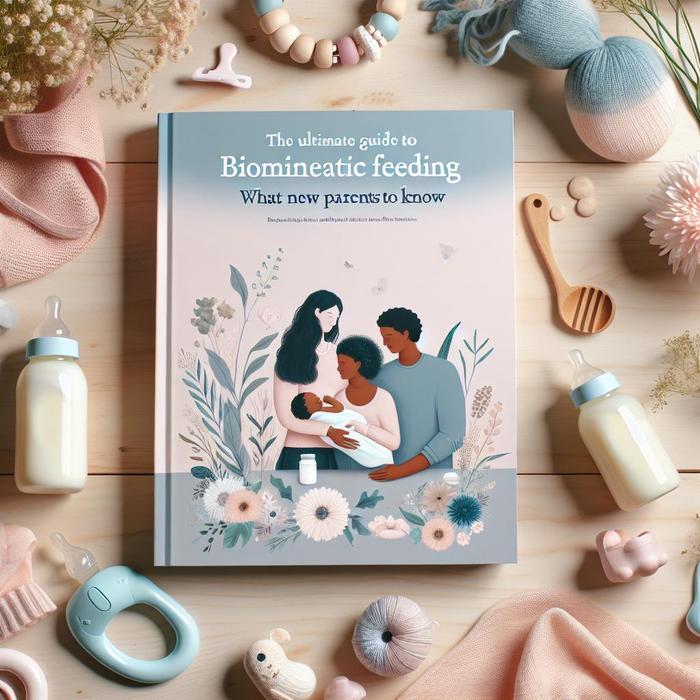Getting Started with Biomimetic Feeding: Recommendations for New Parents
Becoming a parent for the first time is an incredibly exciting journey filled with joy, anticipation, and a little bit of nervousness. One major concern that probably keeps you awake at night is feeding your baby. With so many products flooding the market and conflicting advice everywhere, it can be overwhelming to decide what’s best for your baby.
What is Biomimetic Feeding?
The term biomimetic feeding might sound a bit complex, but it’s a simple and intuitive concept. Biomimetic feeding refers to the process of feeding your baby in a way that closely mimics the natural breastfeeding experience. The aim is to create a seamless transition from breast to bottle and reduce common issues like bottle rejection and nipple confusion.
Choosing the Right Bottles
Selecting the right baby bottle is an integral part of biomimetic feeding. The goal is to find a bottle that mimics the shape, flow, and movement of the mother’s breast. Thankfully, many innovative brands cater to these needs, making the decision a bit easier for new parents.
- Nanobébé: Known for products preserving breast milk nutrients and providing an ergonomic shape similar to a mother’s breast.
- Comotomo: Offers soft, skin-like silicone baby bottles to mimic breastfeeding.
- Tommee Tippee: Their Closer to Nature bottles are designed to mimic the natural flex, stretch, and movement of a mother’s breast.
- Philips Avent: Features wide, breast-shaped nipples to encourage a natural latch similar to the breast.
How to Transition Smoothly to Bottle Feeding
When it comes to transitioning to bottle feeding, patience and persistence are key. Baby might need some time to adjust to the new feeding method, but a biomimetic approach can significantly ease this transition. I personally found that following a routine and procedures found on the biomimetic-bottles guide helped immensely.
Importance of Partner Involvement in Feeding Routines
Feeding isn’t just a mom’s job. It’s important to involve partners in this process as well. This not only gives mom a much-needed break but also strengthens the bond between baby and partner. I found this resource about the benefits of partner involvement very insightful.
Recognizing the Signs when Your Baby is Ready for a Feeding Change
As your baby grows, their feeding needs will change as well. Being aware of these signs can help avoid feeding struggles and keep your baby content and well-fed. A helpful guide about top signs your baby is ready for a feeding change could serve as a useful resource.
Remember to trust your instincts and provide the most natural breastfeeding experience with the help of biomimetic feeding. You got this!
Making Use of Breast Milk Nutrients
In my personal experience, one of the major advantages of biomimetic feeding is the preservation of breast milk nutrients. Breast milk contains all the essential nutrients a baby needs for healthy growth and development. A study revealed that the straightforward action of pumping, storing, and warming breast milk might lead to the degradation of these nutrients. Thankfully, biomimetic feeding practices can help mitigate this issue.
Nipple Flow and Your Baby’s Comfort
An important aspect to consider when choosing a bottle is the nipple flow. This is crucial because the flow varies from woman to woman, and it’s something a baby gets used to during breastfeeding. I found that when the nipple flow of the bottle closely mimics that of the mother, the baby adapts more easily.
La Leche League offers valuable insights concerning bottle-feeding breastfed babies and how the baby’s feeding behavior and flow preference can play a significant role.
Benefits of Biomimetic Feeding
I often emphasize the multitude of benefits of biomimetic feeding. First and foremost, it ensures a seamless transition between breastfeeding and bottle feeding. It mitigates common bottle-feeding issues like nipple confusion and bottle rejection, and creates a feeding experience that feels natural to the baby.
Research has even suggested that biomimetic feeding aids oral development. A study indicated that the act of breastfeeding, and by extension biomimetic feeding, promotes better oral health by enhancing jaw and facial bone development.
Easing the Transition with Rewarding Rituals
Creating a familiar and comforting ritual around feeding times can help transition into bottle feeding. As a parent, I found that singing a lullaby, maintaining eye contact, or gently rocking can have an incredibly soothing effect on the baby, making the switch from the breast to the bottle less stranger-like.
What About Night Feedings?
Night feedings can be especially challenging for new parents. What worked for us was implementing the biomimetic feeding method. With the feel of the natural breastfeeding experience, our partner could also take shifts for night feedings, allowing for more well-rested parents, and a stronger bond with the baby.
Building Connection and Trust
Similar to building trust with nature, the biomimetic feeding approach allows babies to trust the feeding process. This resemblance to natural breastfeeding also allows you as a parent to create stronger bonds, fostering trust and connection with your baby during feeding times.
My Recommendation
As an experienced parent and digital marketing professional, I understand that transitioning to the bottle can sometimes be a challenge. But through my personal journey, incorporating biomimetic feeding provided a more natural and calming experience for my baby, making the bottle feeding transitions smoother. Remember to go with the flow (quite literally with the nipple flow), and observe your baby’s needs and signs.
Embrace the Journey
Remember, every baby is different and will adapt differently to the bottle. Be patient and persistent and soon enough, your baby will be comfortably bottle feeding. And finally, enjoy this journey. As overwhelming as it seems, it’s also filled with joy and some truly priceless moments.






